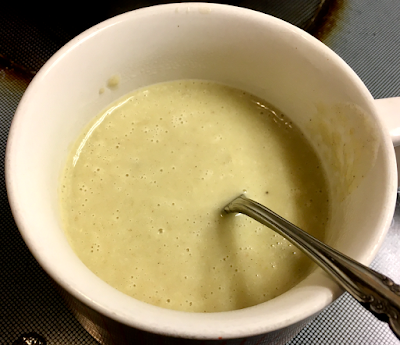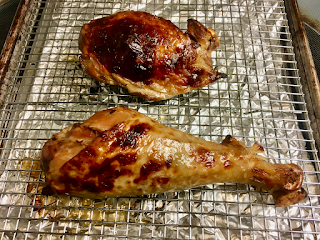1 October 2021
Recipe from Sous Vide for Everybody, America's Test Kitchen, 2018, p. 74; also available online.
I've been doing sous vide cooking since the start of the year, though it is a method I've known about and been interested in using for some time. Food is sealed in a plastic bag then cooked in a constant temperature water bath. It provides even cooking of the food with little to no risk of overcooking and, as a bonus, leads to easy clean up. I recently got a sous vide cook book and this recipe is one that stood out to me. This recipe is the only one I have made where the meat is cooked in a sauce.
Beef short ribs were seasoned with salt and pepper, browned in a Dutch oven, then set aside. Onion, celery, carrot, salt, and pepper were added to the fat in the Dutch oven and cooked until softened. Tomato paste and garlic were added and cooked until fragrant. Red wine was added, the pot was deglazed, and the mixture cooked until reduced in volume. Beef broth was added, simmered for a few minutes, then processed until smooth in a blender. The ribs and broth were divided between two zipper bags, bay and thyme were added, and the food was cooked at 160° for 22½ hours. (This is much longer than most food cooked sous vide.) It was removed from the water bath, chilled in an ice bath, and refrigerated. Preparation took about an hour. For serving, the ribs were reheated, sous vide, at 160° for about 30 minutes. The ribs were removed and the cooking liquid was strained and cooked on the stove until reduced to about 2 cups.
This "pot roast" was very good and though a long time was spent cooking the meat it was done with no effort on my part once everything was prepared and set up. The meat was a little tough but that was a minor complaint. The sauce/gravy was excellent. I would make this again but I'd probably make half as much.

















































